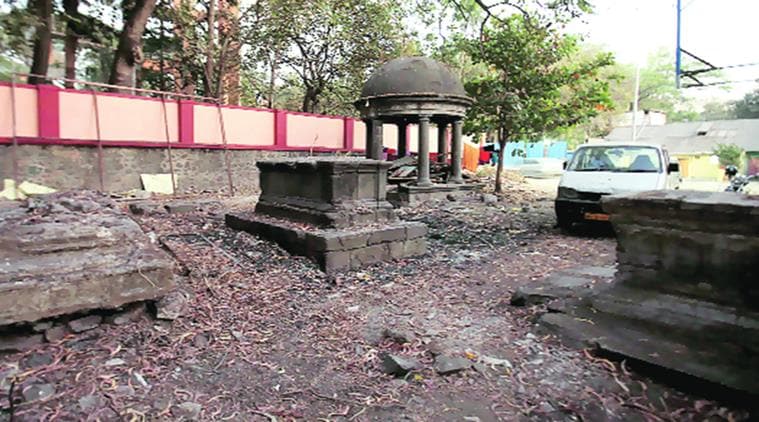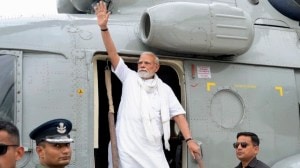Tombs of French soldiers in city crying for ASI attention
Dilapidated, covered by billboards, the structures dating back to 1817 find mention on list of protected monuments.
 The tombs are located near the Commissionerate. Arul Horizon.
The tombs are located near the Commissionerate. Arul Horizon.
As one takes the lane on the left that is adjacent to the State Bank of India behind the Commissionerate, one finds a small piece of land that houses various handcarts, a few four-wheelers and a great number of advertising material like hoardings of various sizes, rusted iron rods et al. Amidst all this, one can spot a few elevated structures made with black rocks. Broken from various sides, the structures in reality are tombs that date back as early as 1817 and are of various French soldiers.
However, the ruins of the neglected tombs paint a gloomy picture. They are not only broken but have also been encroached aggressively. One can see remains of the burnt garbage. The stones of some of the tombs have disappeared completely while a few others aren’t visible, covered as they are by huge billboards lying atop them. There is no sign of any inscriptions that could have revealed the name of the soldiers.
[related-post]
What’s surprising is that these European tombs are listed in the monuments list of Archaeological Survey of India (ASI), Mumbai Circle. The website of ASI says, “In and around Pune, there are some old cemeteries and tombs of French officers in Ghorpadi and on the Parvati Hill road… There are more graves of Europeans who fell in the Battle of Kirkee (1817) on the river bank.” It further says, “An old graveyard is near St Paul’s church and another in the East Street.”
Sunil Kamble (40), who stays opposite to the graveyard, says he had heard from his grandfather that the graves are of some “important firangi soldiers”. “Our family has been staying here since long and as long as I can remember, the condition of the these graves has never been good. Instead, they have deteriorated with time,” he says.
One of these tombs, the one which is relatively in a better condition, is a circular structure, nearly 10 feet tall. There is a dome-like structure standing on six pillars.
City-based historian Mandar Lawate says, “It belonged to the wife of one French soldier named Verjis. It is said that after he built a tomb for her, he wanted to place a statue of Mother Mary or Jesus Christ in the centre of the tomb. To find the right kind of statue, he made a visit to Kolkata but unfortunately passed away before he could start for Poona.”
“Unfortunately, despite featuring in the ‘protected monuments’ list, the tombs lie neglected. More than a decade ago, nearly 100 tombs located near COEP were destroyed and dumped in the Mula river to build a six-storey building. The tombs belonged to soldiers who fought in the Battle of Khadki in 1817. It shows apathy of the officials towards historical monuments,” Lawate says.
According to archaeologist Sanjay Deshpande, the European tombs behind the Commissionerate belonged to a few French soldiers as well as a few local Europeans of that era. “However, the grave plaques have withered so badly that it cannot be said with full authority as to which soldiers fought for battle. Even ASI does not have any original papers to substantiate it. In all possibility, the ASI might de-list the tombs in future.”
A few years ago, a report by Comptroller and Auditor General of India had released a list of “missing monuments” that included a set of European tombs in Pune. Later, ASI reported to have “found” them. There are three sets of Europeans tombs in the city. While two of them, in Ghorpadi and near sub-area command office, are intact, the one behind the Commissionerate is in a dilapidated condition.
“It’s difficult to say whether ‘missing European tomb’ was a reference to the tombs that once existed near COEP or the ones behind the Commissionerate,” says Deshpande.
When the office of MS Chauhan, the Superintending Arachaeologist of ASI (Mumbai Circle), was contacted for a response, the reporter was told he was on leave for 10 days. Even the Deputy Superintending Arachaeologist was on leave and unavailable for comment.







